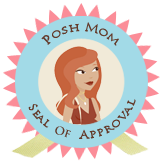“If kids can kick at a TV after watching Power Rangers, can’t we get them to learn to read?”-Angela C. Santomero, Creator, Executive Producer and Head Writer of Super Why!
[Almost] Every morning, while Maddy has her typical 1-year old breakfast, I turn on PBS to either catch the tail end of Sesame Street or the start of Curious George. The TV usually goes off around 9am right around the time of our morning jog/walk around the neighborhood. What I didn’t realize, though, was that over in the 9:30 time slot was a super popular show about adorable fairy tale characters and reading super heroes called Super Why!
Whenever I receive an invite from one of the ladies at 360 Public Relations, I know it’s a fun opportunity to meet other moms and learn how companies really do think of children and families in their processing of ideas. That’s why I jumped at the chance to attend the PBS Studio behind-the-show lunch-and-learn with Super Why! creator Angela Santomero. Even though Maddy is too young to “watch” the show, this was my opportunity to be educated about PBS children’s programming from concept to creation
But first, click here to learn more about the Super Why! characters

In the same fashion that a teaching staff works to put together a multi-layered reading curriculum with specific learning tasks and behaviors, the creative minds behind Super Why! create the multi-layered, multi-age level related program that has statistically proven to be effective for building literacy skills for kids.
Some of the highlights from the workshop included statistical evidence of improved literacy skills and personal anecdotes from the creators and producers, all of whom are mothers:
- Children from low-income families and who participated in a Super Why! test group, showed significant improvement in reading skills scoring 46% better than children who watched an alternate program.
- After watching Super Why!, the test group children were faster at naming letters and sounds.
- PBS hosts Super Why! Reading camps using a format much like the curriculum I’ll review later. The 2008 results of the camp revealed that there was a 5% increase in letter naming, 4% increase in ability to pick out letters from the alphabet, 139% increase in word decoding, 18% increase in sound-letter identification, 84% increase in proper word spelling and 29% increase in reading words.
- Leslie Rosenberg, Senior VP Children’s Media was inspired by her own children to lead the launch of the PBS Kid’s preschool platform which include popular shows like Curious Geroge, Super Why! and Sid the Science Kid.
- An episode where the Super Why! team confronts the Big Bad Wolf was an idea given by Angela’s two daughters, who are frequent script contributors.
This and next week I'll be sharing the Super Why! experience of another NJ mommy C2CMom to see how real kids react to and enjoy the show. I'll also be putting my 2 cents in as an educator about how the structure of the show, the lessons and the web aid in reading.
Monday: Multimedia-teacher tested and approved





















No comments:
Post a Comment